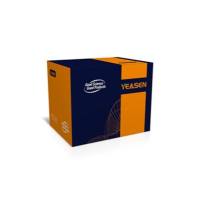We describe methods for the genetic analysis of a DNA–protein interaction from any species. The DNA-binding domain of the protein of interest is expressed in yeast cells as a fusion with a known transcriptional activation domain, and the target binding site is used as an artificial upstream activation sequence (UAS) in an engineered promoter driving expression of a reporter gene, such as β-galactosidase. Expression of the reporter gene is dependent upon specific, high-affinity interaction between the DNA-binding domain of the artificial activator and the synthetic UAS. Error-prone PCR is used to introduce mutations into either member of this interacting pair, and homologous recombination is used to return the mutagenized sequences to their proper sequence contexts in vivo. Altered expression of the reporter gene is then used as a screen or selection for mutations conferring the desired phenotype, such as reductions or increases in the stability of the DNA–protein complex. Following identification of the relevant mutations, the mutant protein or binding site can be subjected to further analyses to confirm the expected biochemical basis of the selected phenotype. This approach has been used extensively in the analysis of the TFIIIA-5S rRNA gene interaction from both Xenopus laevis and Schizosaccharomyces pombe .






